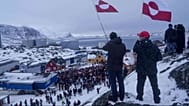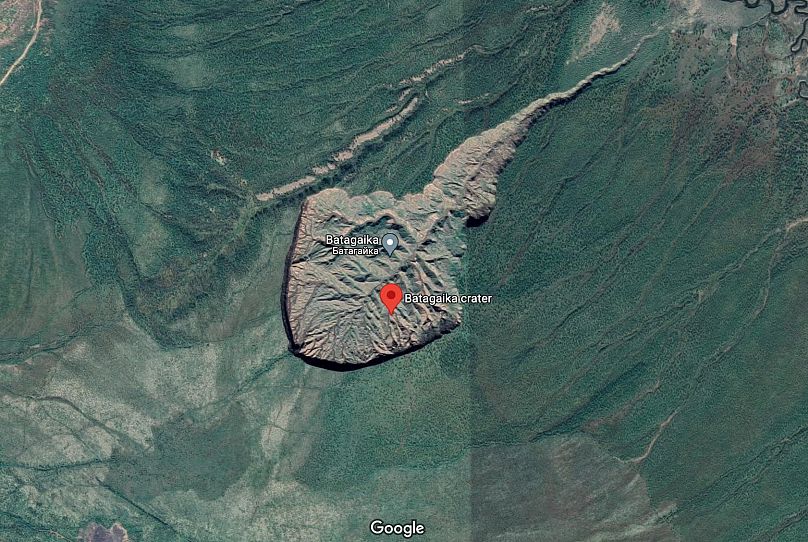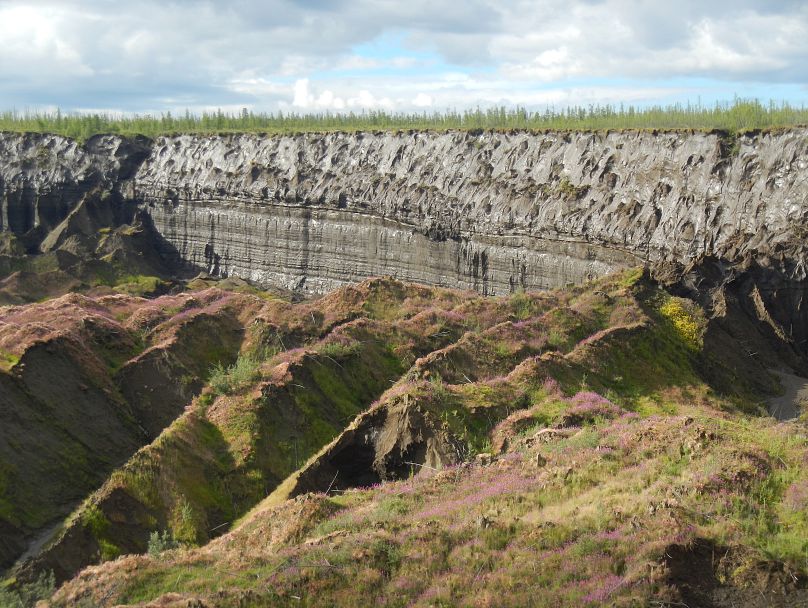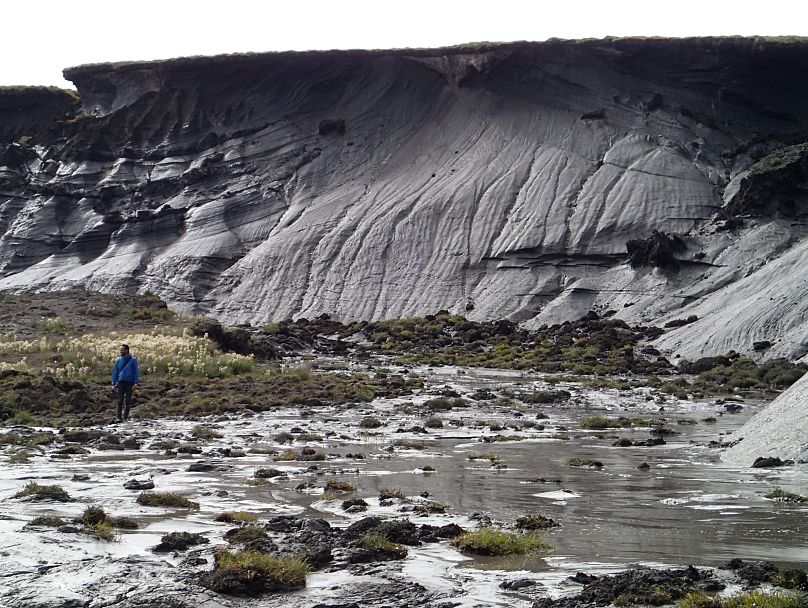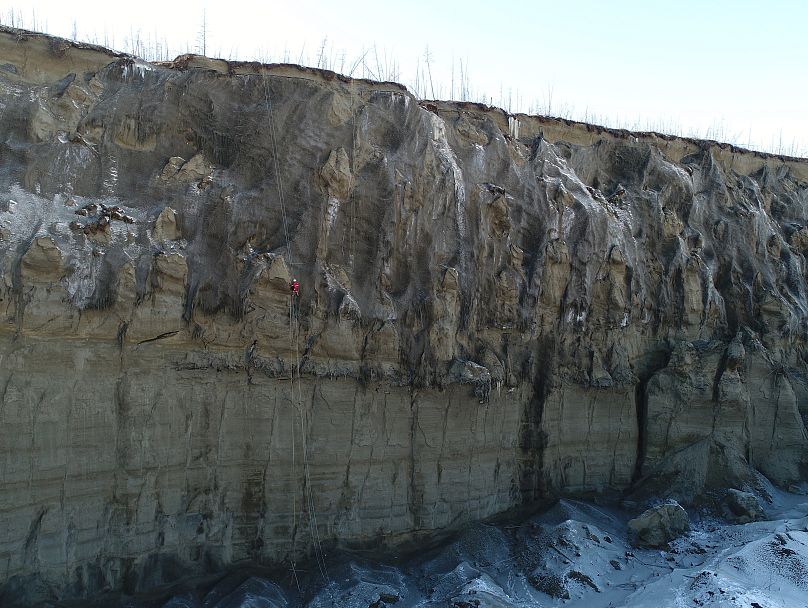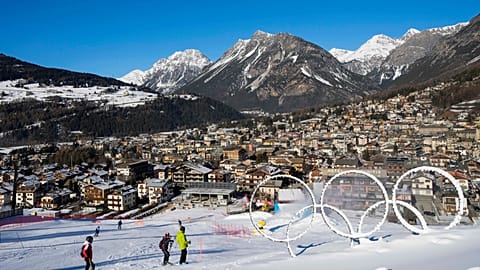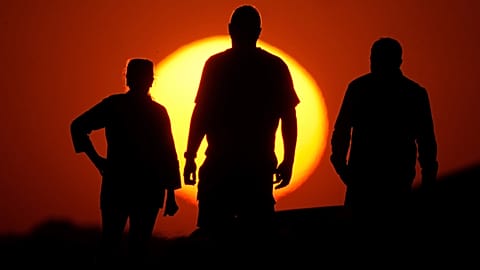The permafrost region contains three times as much carbon as all living vegetation on Earth - with concerning consequences as it thaws.
You may have seen photos of a cavernous chunk of land in Siberia recently, accompanied by headlines on the growing ‘mouth of hell’.
The Batagaika crater in Yakutia, Russia, has recently entered the news again, though there’s no major update on its spread.
Resembling the rocky outline of a stingray from above, this giant hole first formed in the 1960s when nearby forest clearances caused the underground permafrost to thaw and collapse.
The Indigenous Yakut people who live in the area have reported hearing strange booming sounds for years, as more chunks of frozen wall fall in. While the recovery of a 42,000 year old extinct foal in 2019 - preserved with liquid blood inside - has added to the mysterious aura and scientific possibilities of this site where worlds seem to collide.
Scary as it sounds, the most alarming facts lie not with the dimensions of the biggest ‘abrupt thaw’, as they’re known. Instead it is the rate at which other permafrost-induced craters are forming in the Arctic, and the huge stores of greenhouse gases they unleash that are worrying.
Permafrost is any land that stays frozen all year (or, more precisely, for two years straight). The northern permafrost region spans 15 million square kilometres - roughly three times the entire area of the EU plus the UK.
Its compact soils contain more carbon because the plants that grow during the Arctic summer are frozen into the permafrost before they can decompose. This means the region’s frozen ground contains an estimated 1,500 billion tonnes of carbon.
It is a staggering amount that equates to three times the mass of all living vegetation on Earth, explains Gustaf Hugelius, a permafrost expert at Stockholm University.
As the landscape heats up, microbes start feeding on the plant remains, producing CO2 and methane as byproducts.
Hugelius co-authored a 2020 report which found that these abrupt thaws could double the impact of permafrost thaw accounted for in climate models, including those used by the IPCC.
We spoke to the professor of physical geography, a member of the Permafrost Carbon Network, to understand more about this strange and concerning phenomenon.
Are more craters opening up because of climate change?
Permafrost is not a uniform layer. It contains various amounts of accumulated sediments, as well as pure ice - which accounts for as much as 70 per cent in parts of Siberia. When heat starts to penetrate the ground, the ice melts and drains away, leading chunks of the earth to cave in.
“We call it a positive feedback mechanism in climate science,” explains Hugelius, “once the collapse starts, ever more heat and water can penetrate into the permafrost and you get a more and more rapid process which speeds up by itself.”
Permafrost composed of soil or bedrock doesn't melt but thaws, in the same way a chicken defrosts.
Craters are forming more and more rapidly as a result of climate change, confirms Hugelius. They can also be triggered by fires, which are increasing as a result of global warming.
“If there's a naturally-occurring fire, that could trigger a crater to form but then it would stabilise over time and the permafrost would regrow,” Hugelius says.
“This has been happening for thousands of years - this cycle of the landscape changing - but we’re speeding it up with our global warming.”
Hugelius has seen similar ‘thermokarst’ landforms on trips to Canada, where some studies have tracked a tenfold increase in abrupt thaw formation, following hotter summers over the last few years.
Can we stop these craters from forming with stronger climate policies?
“Permafrost is a sleeping giant,” explains Hugelius; as well as being vast and full of carbon, it responds very slowly to changes in the environment.
“So we still haven’t really seen the permafrost wake up even to the warming that we’ve done so far.”
If, theoretically, we stopped global warming in its tracks today - at +1.2C above pre-industrial levels - the permafrost would still keep thawing for up to 200 years and emitting greenhouse gases for a long time.
Still, there’s a world of difference between effective climate action and passing 1.5C of warming. A global average of 3C, where we’re headed now, actually means temperatures of 7C in the Arctic.
Much of this crucial frozen land will be stuck in a losing spiral, lumping 10 generations of humanity with the consequences of soaring emissions.
Hugelius is used to working with such stark scenarios, but finds his message especially striking at climate meetings with policymakers new to the science - or where Indigenous people from the Arctic are also present.
It’s a problem of both local concern - as the foundations of homes and roads shake, and rivers are poisoned by spikes of mercury from thawed permafrost - and global significance.
The dramatic disfiguration of permafrost landscapes must be addressed at the highest policy level, says Hugelius, demanding even more urgent climate action.
“You also have to consider the country of permafrost - it will act as its own country - and will also emit, so we have to include that in the budget and it’s not really been done yet.”
When will the Batagaika crater stop growing?
Loeka Jongejans, a PhD student from AWI’s Permafrost Research Station in Germany visited the Batagay thaw slump with a group of international researchers in 2019.
They found it to be growing rapidly. “Every summer, huge amounts of sediments, water and organic matter are mobilised from this possibly biggest thaw slump in the world,” she tells Euronews Green.
Jongejans collected samples from the 55-metre high headwall and blocks on the slump floor for laboratory analyses, to better understand the amount and vulnerability of permafrost carbon.
The crater is likely to keep expanding backwards and upwards - eating into the hill - until it hits sediments with significantly less ice, or bedrock, adds Hugelius.


